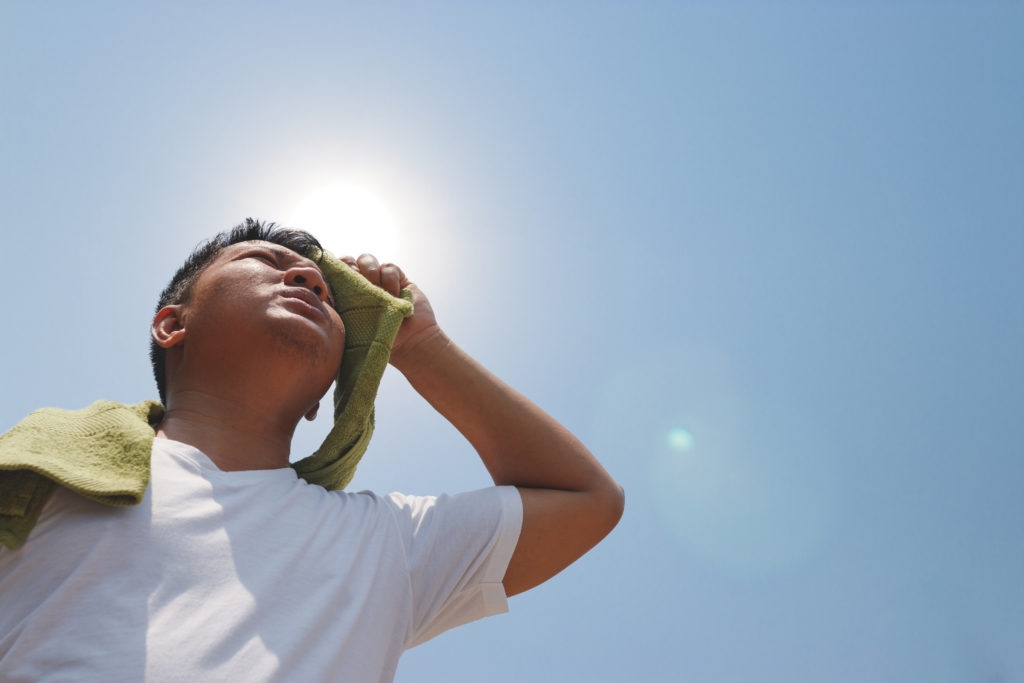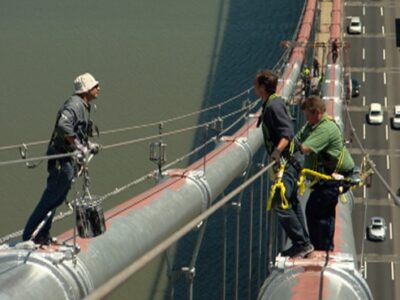Construction workers and anyone else in California who works outdoors should know about the danger of heat-related illness. Heat stroke, where the body loses its ability to control body temperature, is the most serious of these illnesses, according to the National Institute for Occupational Safety and Health. Other conditions include heat exhaustion, heat cramps, and heat rash.
Working under direct sunlight, especially during California’s hot summer months, poses a severe risk of occupational heat exposure. This is particularly true for employees in sectors such as agriculture, construction, landscaping, roofing, and utility maintenance.
Types of Heat-Related Illnesses Explained
Heat Stroke (Most Severe)
Symptoms:
- Dry, red skin
- Chills
- Confusion or disorientation
- Strong, rapid pulse
- Possible loss of consciousness
Heat stroke is a medical emergency. The body can no longer regulate its internal temperature, and this can result in organ damage or death without immediate intervention.
Heat Exhaustion
Workers will know that they are suffering heat exhaustion if they feel weak and dizzy, sweat excessively, and have clammy skin.
Additional Symptoms:
- Headaches
- Rapid heartbeat
- Fatigue
- Nausea or vomiting
Heat Cramps
Heat cramps are characterized by muscle pain and spasms in the abdomen or extremities. These are often due to dehydration and salt loss.
Heat Rash
Heat rash will lead to clusters of red blisters or pimples, normally around the neck, upper chest, and groin area. It’s caused by blocked sweat ducts in hot, humid conditions.
Heat Acclimatization: Gradual Adaptation Saves Lives
According to Cal/OSHA, new or returning workers must be given time to acclimate to hot conditions. This means:
- Start with 20% of the workload on Day 1
- Increase by no more than 20% per day
- Full acclimatization takes 7–14 days
Supervisors should monitor these workers closely during this phase to reduce the risk of heat stroke.
Modern Technology to Prevent Heat-Related Illnesses
Employers and workers can now leverage heat safety technology:
- NIOSH Heat Safety Tool App: Offers real-time heat index, WBGT (Wet Bulb Globe Temperature), and protective measures
- Smart PPE: Helmets and vests with sensors that track body temperature and hydration
- Wearables: Devices that alert workers to early signs of fatigue, dehydration, and overexertion
Cognitive Impact of Heat Exposure
Heat doesn’t just affect the body; it affects the mind:
- Slower reaction times
- Poor decision-making
- Memory and attention deficits
- Increased likelihood of workplace accidents
These cognitive symptoms must be taken seriously, especially in safety-sensitive environments like construction sites.
Supervisor Responsibilities Under Cal/OSHA
California regulations (Title 8, Section 3395) require employer-level training. Supervisors must:
- Monitor weather and issue heat alerts
- Identify early symptoms of heat illness
- Ensure access to water and shade
- Maintain emergency response procedures
Failure to implement or enforce these protocols is a legal violation.
When Are Workers Most at Risk?
Environmental Risk Factors:
- Afternoon hours (12 PM – 4 PM)
- High humidity levels
- Radiant heat from asphalt, rooftops, or equipment
Occupational Risk Factors:
- Wearing heavy protective gear
- Minimal rest breaks or recovery
- Continuous labor without job rotation
- Poor airflow and confined work areas
Preventing Heat-Related Illnesses on the Job
Hydration Guidelines
According to NIOSH and Cal/OSHA, workers should:
- Drink 16–20 ounces of water 30 minutes before starting work
- Continue drinking 5–7 ounces every 15–20 minutes
- Avoid alcohol, coffee, or sugary soft drinks
- Consider electrolyte-rich drinks when sweating heavily
Appropriate Clothing and Equipment
- Lightweight, breathable clothing
- Light-colored fabric to reflect heat
- UV-protective hats and sunglasses
- Cooling bandanas or vests
Shaded Rest and Recovery Zones
- Rest breaks every hour in the shade
- Emergency cool-down areas with ventilation
- Access to ice packs or misting fans when needed
Work Schedule Adjustments
- Shift physically demanding tasks to the morning hours
- Rotate team members every 60–90 minutes
- Implement buddy systems for real-time monitoring
Legal Framework: What Does Cal/OSHA Require?
Employers must:
- Provide training, hydration, shade, and rest
- Maintain written Heat Illness Prevention Programs (HIPP)
- Identify site-specific risks and prepare emergency plans
- Keep incident reports and employee complaint logs
Legal citation: Cal/OSHA Title 8, Section 3395
Your Rights: Workers’ Compensation for Heat Illness
If you suffered from a heat-related illness on the job, you may pursue a workers’ compensation case and be reimbursed for the cost of medical treatments, prescriptions, and more, not to mention a portion of your lost wages. Eligibility for benefits does not depend on who was at fault in a given incident, but the employer may still deny your claim. Whatever the situation looks like for you, a lawyer may greatly help with the filing process.
What If Your Employer Denies the Claim?
Some employers may attempt to deny responsibility, claiming:
- You were off-duty at the time
- You ignored company policies
- Your condition was pre-existing
You have the right to appeal, and legal support can dramatically increase your chances of success.
How Hussain Gutierrez Law Can Help
At Hussain Gutierrez Law, we specialize in workers’ compensation law, with experience in occupational illnesses, including heat stress, repetitive strain, and toxic exposure.
We help injured workers by:
- Filing claims correctly
- Gathering medical evidence
- Appealing denied cases
- Negotiating maximum settlements
You don’t have to face your employer or insurer alone.
FAQs: Heat-Related Illness & California Workers’ Rights
What jobs are most at risk for heat-related illnesses?
Construction, agriculture, landscaping, warehouse jobs, roofing, and outdoor utilities.
Can I get workers’ comp if I faint at work due to heat?
Yes. Fainting, confusion, or collapse from heat are all valid indicators of occupational illness.
What are California’s legal break requirements during hot weather?
Employers must offer cool-down rest breaks of at least 5 minutes in the shade as needed, particularly when temperatures exceed 80°F.
Do I need to visit a doctor to file a claim?
A medical evaluation strengthens your case but isn’t always required to begin the process.
Can undocumented workers file for compensation?
Yes. California law provides equal protection and benefits to undocumented employees.
What’s WBGT and why does it matter?
Wet Bulb Globe Temperature (WBGT) measures heat stress in direct sunlight, factoring in humidity, solar radiation, and air temperature. It’s more accurate than standard thermometers in outdoor settings.
Final Thoughts: Stay Safe, Stay Informed
Heat-related illnesses are preventable, and when they happen, they are compensable. Whether you’re laying asphalt, picking crops, or framing houses under the sun, you deserve protection and fair treatment under California law.
Protect Your Health and Legal Rights
If you or a loved one experienced a heat-related illness on the job, don’t wait.
Contact Hussain Gutierrez Law today for a free consultation.
Let our legal team help you file, fight, and win your claim.



